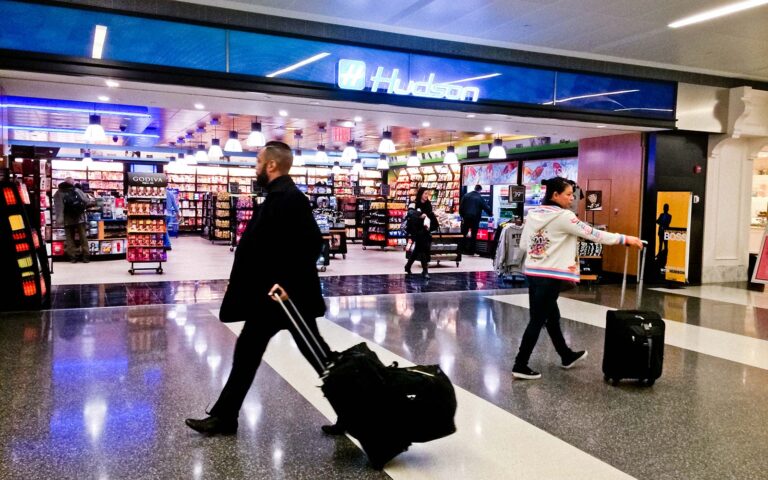Mobile Apps for Travel: The Analytical Challenge in this Growing Channel
The use of mobile apps to search and book in the online travel space has grown dramatically over the last five years – from around 2-3% to over 25%. Indeed according to e-marketer, online travel is reaching a tipping point in 2016 when, for the first time, more than half of all online bookings for U.S. travellers will be completed on a mobile device. By the end of the decade mobile will enjoy a very comfortable gain on desktop and officially claim a majority of all online bookings.
This massive increase goes hand-in-hand with the improvements in handheld technology and the rise of the smartphone. With this change comes the challenge of understanding the traveller demands in this new space. Some of the new traffic is simply mobile browser based so it ends up on brand.com or m.brand.com, if a mobile optimised site exists but much of it isn’t.
For the major consumer facing businesses, the introduction of mobile apps has become typical and with it comes some changes in technology. OTAs and other B2C organisations that are so used to deploying JavaScript HTML tagging to drive their “Google Analytics” need to understand how the B2B world handles analysing their search traffic in the absence of Google and its competitor products. This is important because not all the mobile traffic will be new – much of it will represent a swing of existing customers away from the website that was easy to monitor. Sadly, many business assume, at their peril, that web traffic analysis results can be applied across all of their distribution channels. Different channels exist for good reason and the business should not make these assumptions and should aim to deliver the much heralded omni-channel view of their customers.
The Mobile Technology Shift
The B2B portion of the travel supply chain is all too familiar with XML based APIs, but it turns out that the challenges of managing and making business decisions for an XML based distribution channel are very similar to those faced by the B2Cs now managing mobile apps.
At the core of the B2B channel is an XML API interface to the booking platform and it uses, wait for it, Simple Object Access Protocol (SOAP) encapsulated XML messages to deliver product and pricing information. Sounds very technical? In truth the XML data structures that are used to exchange product information and pricing can be highly nested and quite complex, but at the simplest level XML is very human readable, for example
<hotel name=”Ambassador”>
<room name=”Junior Suite”>
<mealplan>half board</mealplan>
<rate>195</rate>
<currency>GBP</currency>
</room>
</hotel>
This is a very simple example of how the nested <tagging> works to transmit data as text. As it gets more complicated the nesting grows – there would most likely be multiple <room> sections for a given hotel and a lot more information about the room, meals and extras.
Mobile apps run on handheld devices which although very advanced in terms of capability are still comparatively low power devices versus desktops, laptops and servers. More importantly, the network connectivity of 3G cells or Wi-Fi offers good but still limited bandwidths. Efficiency is the name of the game hence the need for a lighter weight protocol that is simple to code into mobile apps. RESTful protocols with JSON are just the ticket. In this RESTful world the mobile tends to send a request that looks very like the URLs we see but largely ignore on our browser address bar. For example this simple request:
http://www.hotelsite.com/availability_check?&date=”201606022”&city=”Rome”&Adults=”2″
uses the query string section after the “?” as a list of “&name” parameters to convey that the search is for a room for two adults in Rome on 22nd June.
The server at the hotel that handles this request will check its inventory and may generate the same data that we used in the XML example above, but this time send it in JavaScript Object Notation (JSON):
{“hotel”:{“room”:{“mealplan”:”half board”,”rate”:”195″,”currency”:”GBP”,”_name”:”Junior Suite”},”_name”:”Ambassador”}}
While it is a lot less human readable, the basic structure is maintained. It will, especially for complex data, be more compact than XML, requiring significantly less network bandwidth to transmit. The mobile app is ready programmed to display the response data using the desired corporate format so we don’t need any HTML code either.
Why Should I Analyse The Mobile Channel?
Back at the business level, the customer facing travel organisation that had a stable business via its website has moved with the times and appropriately launched their mobile app. Now the business is faced with an ever growing mobile centric traffic stream plus a shifting of existing website traffic to a mobile channel – a technology shift from the highly visible (HTML/JavaScript) world to a much harder to track JSON based API world. They need to start tracking and analysing this JSON traffic to understand trends, demands, product availability, conversion rates and ultimately analyse the data to develop rules that will support making differentiated product offers and bundles to individual consumers or consumer segments. Note that analysing the traffic is fundamentally different from analysing the usage of the app e.g. button pushing which is also important but for a different set of reasons relating to uptake and user experience.
The world is extremely competitive. Twenty years ago the vision of analysing customer data to drive better customer interaction underpinned the Customer Relationship Management (CRM) technology wave that hit major industry sectors. This is matured thinking. In particular it was embraced by the forward thinking players at time and those that heavily invested e.g. Vodafone and Tesco in the UK etc. are the leaders in their markets today. Whilst there will be many factors to their success, the contributory role of CRM is undeniable. For a modern day example just think of Amazon and how it analyses its traffic and presents that back to us as “Customer who bought x also bought y” or how they email you with offers and reminders.
The great thing about the mobile app is that not only can it be used to search and book data it can be used to manage existing bookings. This could be rescheduling travel, adding ancillary services or for airlines this can be as simple as issuing a boarding pass to print or be stored on the mobile device as a barcode to scan during check in. The great news is that once a customer has managed a booking for the first time, then they have registered/logged in their mobile device to the server and they are readily identifiable for all subsequent transactions including searches and offers.
However individual we like to think we are, the reality is that we are all influenced by our surroundings. Other people are exposed to same news articles and blogs that we are. As a consequence we, depending on our background, status and education level probably make similar decisions to our peers. Marketing experts call these similar groups segments and give them fun representative names such as “Dinky’s” (affluent couple with: dual income no kids yet) or more recently “Millennials” (the younger online generation deeply attached to their mobile devices) etc.
If an organisation can collect all of the interesting details from their searches and booking requests then it can very quickly start to understand what routes or destinations are being searched for by which segments (or even individuals) for which travel dates, durations of stay etc. Further analysis of the products offered in the search responses allows tracking of level of choice, product availability and when booking analysis using the same criteria is also collected and analysed, the conversion rates and their underlying influencers can also be established. If predictive models are used, this conversion data can be to score/identify other future high probability converters. The result is an opportunity to build a set of rules that are likely to significantly increase the relevance of the products or more likely product bundles being offered to a given consumer. Higher relevance means happier, more loyal customers and better look to book ratios. With mobile this means a completely customised offer directly to a consumer‘s handheld device. Everybody wins.
OK, So How Hard Can It Be?
All analysis starts with data collection. The basic idea is to capture the business relevant information from every single transaction, process it, summarise it and store in an organised manner that will enable access by key teams in the business.
Many businesses, for simplicity, just track bookings which is amazingly short sighted – they have no clue as to how many searches they get for any given destination or route, from whom, what they offered in response and more importantly why they didn’t convert. These are the businesses that are compelled to seek growth via the costly route of adding new traffic before improving revenues from their existing traffic first.
Capturing and analysing all (i.e. searches, bookings, modifications etc.) traffic is not simple. Booking traffic is often less than 0.02% of the total. Even modest sized hotel distributors handle millions of search requests per day while the largest have several hundred million to deal with. Unfortunately, many organisations run custom booking platforms and have an enthusiastic in-house development team that sees the analysis problem as simply logging a few transactions along the way in the server code. They make big well-meant promises to management about how they can deliver data. Their efforts will inevitably be based around adding transaction logging which slows down the booking platform (lost revenue), generates data for a few counts for a few reports, usually after being processed overnight. The historic data management that’s needed to track trends in stored data hasn’t been thought about and becomes a major project in itself. The system doesn’t really process data in the way that it needs to. Worse still, when the traffic goes up and the booking platform starts to groan under the strain, the logging gets turned off just when it’s needed most. In the longer term, the in-house enthusiast leaves and the organisation struggles to maintain the system. Clearly this strategy, whilst better that doing nothing, is unlikely to provide the data security and certainty that an organisation needs to drive its business in the long run. The main reason is not because the business one way or another can’t overcome the problems but rather that it has entered into what is perceived as an easy add-on type project when it should have budgeted for a more substantial investment to win big. As the results falter the pressure mounts and as costs escalate and overrun everyone’s’ expectations the management tend to lose the will.
So What’s so Great about Triometric’s analytics platform?
Triometric’s analytics platform is designed from the ground up to deliver detailed business intelligence and operational metrics in real-time by capturing and reverse engineering transactions from raw packets on a network. This is achieved using a separate system from the booking platform. Under the covers, the system uses a set of rules to extract just the business relevant data from all the transactions to build up a complete picture. It can be scaled across multiple servers to process huge volumes of traffic. It delivers information to its users via interactive drill down style reporting in a browser, scheduled reports and alerts. Users can graphically explore their data, develop new reports and even export key data to use in detailed analysis or data mining projects.
It is being used by major hotel and flight distributors to process their XML traffic and now with the addition of support for JSON processing it can be used to process mobile app traffic with the same reliability as XML APIs. Need we say more?







